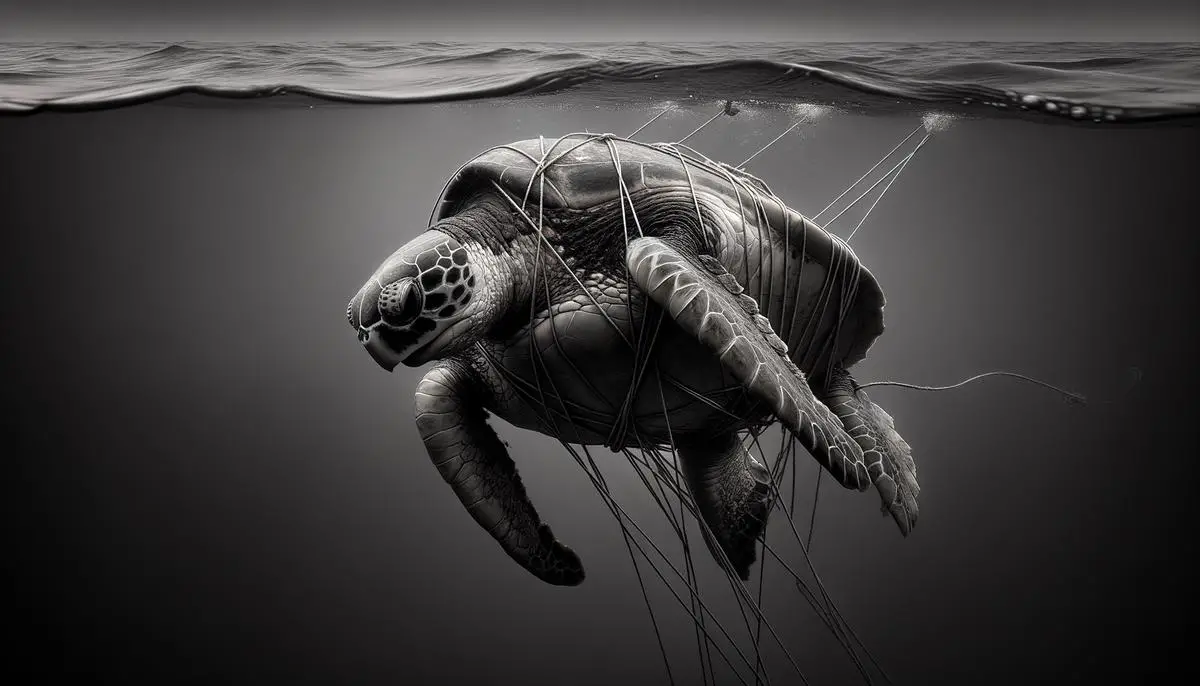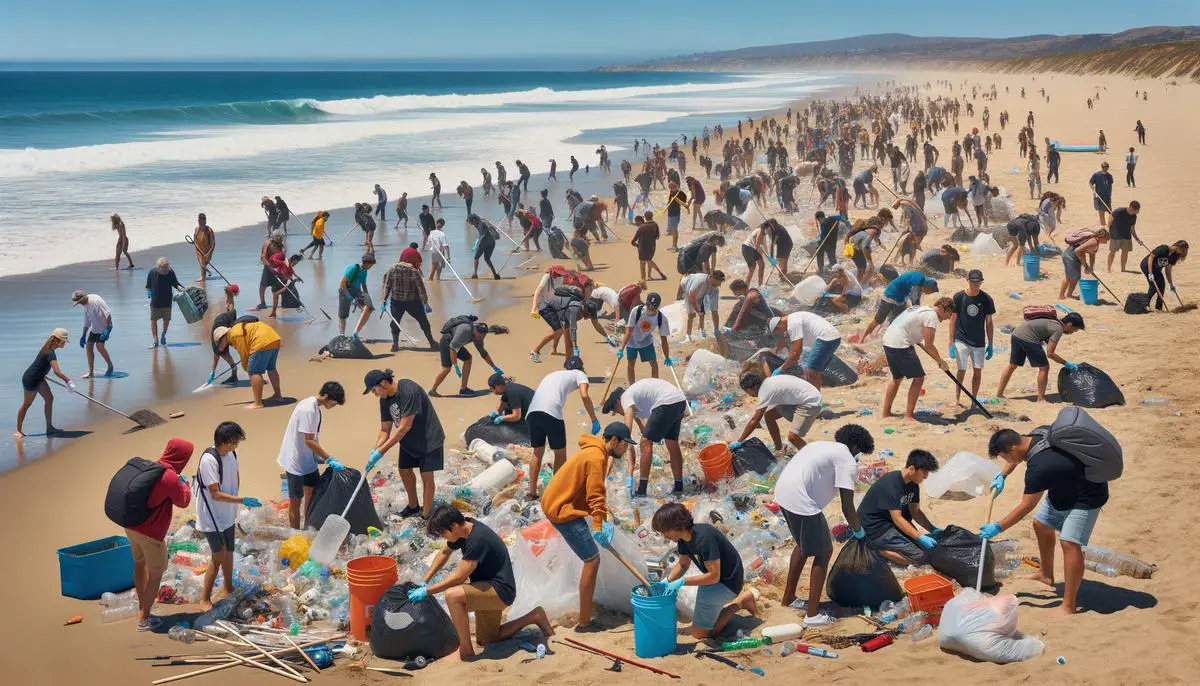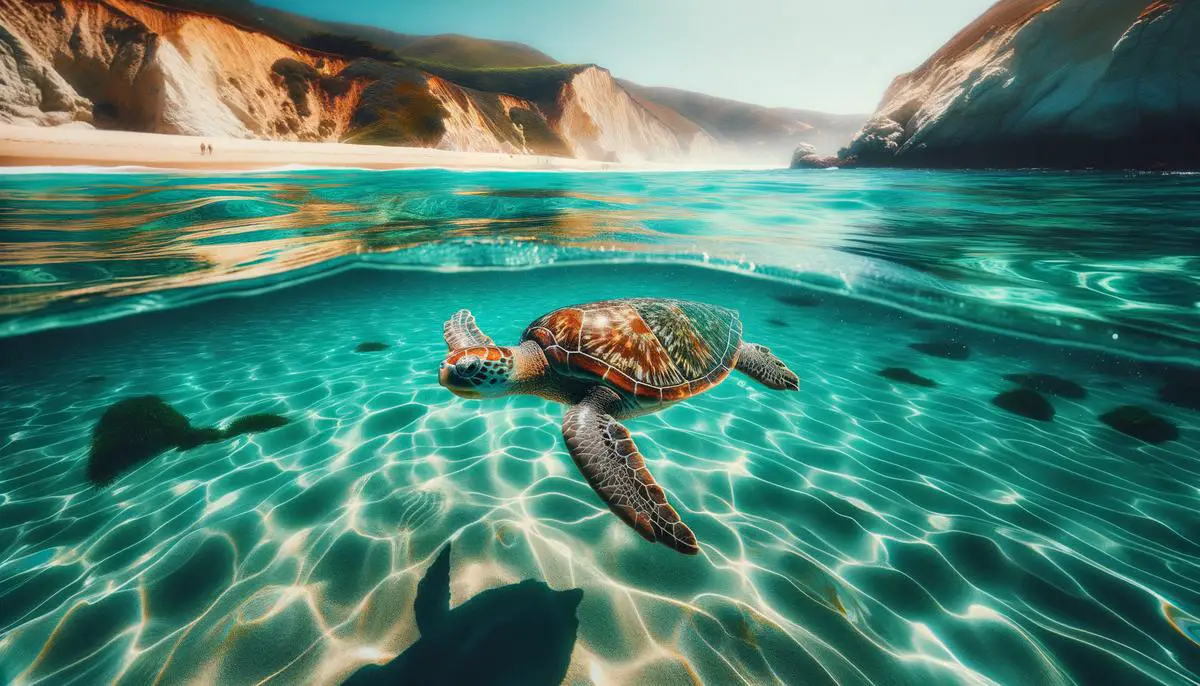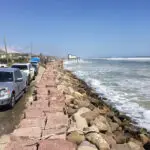Do sea turtles reside in California?
Yes, sea turtles reside in California, with notable populations throughout the state, particularly in Southern California. Among the species calling these coastal regions home are the Green, Loggerhead, Olive Ridley, and Leatherback sea turtles1. Each manifests unique migration patterns and foraging behaviors attuned to California's marine environment.
Southern California offers critical habitats for these species. The San Gabriel River and San Diego Bay are prominent foraging grounds for Green turtles, which commonly originate from nesting beaches in Mexico and take advantage of the rich seagrass beds and warm water effluents in the area2. Leatherback turtles, known for their extensive migratory behavior, travel from as far as Indonesia to the U.S. West Coast following nutrient-rich jellyfish abundant along the California coast.
The bays and estuaries of California also serve as crucial feeding areas for juvenile Loggerhead and Olive Ridley turtles, where they grow before venturing into the open ocean. These areas provide shelter from predators and are teeming with the invertebrates and algae that these sea turtles consume.

What threats face sea turtles in California?
Despite being under the protection of federal laws such as the Endangered Species Act, sea turtles in California still face numerous threats that make their survival precarious. Among the primary hazards are:
- Boat strikes
- Entanglement in fishing gear
- Habitat disruption
Boat strikes remain a significant issue because sea turtles need to surface to breathe. When boats traverse rich feeding grounds like those in San Diego Bay, turtles are at high risk of being hit, often resulting in severe injuries or mortality. This risk is heightened as human coastal activities increase.
Entanglement in fishing gear, such as longline fishing involving miles of baited hooks, can snag turtles, leading to exhaustion, injury, or drowning. Despite regulatory efforts, illegal or poorly regulated fishing practices persist off California's coast, imperiling the diverse turtle population that depends on these waters.
Habitat disruption induced by coastal development, pollution, and the destruction of seagrass beds—a crucial source of nutrition for some turtle species—is particularly devastating3. Plastic waste pollution continues to be a grave concern, as turtles may ingest plastic mistaking it for jellyfish, leading to lethal blockages and chemical contamination.
Conservation initiatives by organizations such as UCSD's Scripps Institution of Oceanography and NOAA have made strides in understanding and mitigating these impacts. Scripps has been at the forefront of turtle recovery research, focusing on the movement patterns and growth of green turtles and engaging with local communities to foster protective measures. NOAA conducts comprehensive monitoring and rescue operations for stranded or injured turtles and coordinates with local agencies and organizations on recovery efforts.
Community-based initiatives are growing, addressing both local and tourists' awareness about the presence of turtles. For instance, UCSD students have been educating boaters about safe boating practices to avoid turtle strikes, a simple yet effective strategy to lessen boat-related incidents.
While California's sea turtles face daunting challenges, focused conservation endeavors offer hope. Through continued research, public engagement, and robust legislative frameworks supporting turtle conservation, there is substantial ground for optimism about the future of these remarkable marine residents.

How do conservation efforts benefit California's sea turtles?
Conservation efforts tailored for sea turtles in California have shown promising results, with initiatives ranging from legal frameworks to grassroots community actions significantly influencing turtle conservation. The cornerstone of these efforts is the Endangered Species Act (ESA), which provides a legal basis for the protection and recovery of endangered and threatened species, including the different sea turtle species found along the California coastline. Under the ESA, activities such as coastal development, pollution, and certain types of fishing that could harm sea turtles are tightly regulated.
At the state level, California's laws and regulations complement federal protections, managing threats locally and focusing on highly impacted areas where sea turtles are known to frequent. State-managed marine sanctuaries and protected areas ensure safe foraging and migratory routes for sea turtles, shielding them from harmful boating and fishing activities.
Local community actions such as beach clean-ups play a crucial role in safeguarding turtle habitats from plastic pollution and other debris that can cause entanglement or ingestion issues. Organizations and volunteers across the state coordinate these clean-ups, often with the support of municipal governments and conservation groups, leading to cleaner beaches and more informed and environmentally conscious local populations.
Educational campaigns and public awareness efforts are another pillar of sea turtle conservation in California. These efforts are crucial in changing local perceptions and behaviors, particularly concerning boating and tourism. Programs aimed at boaters emphasize careful navigation to avoid striking turtles, which often need to surface for air. By raising awareness through workshops, flyers at boat launches, and online platforms, these campaigns help reduce the number of turtle casualties each year.
The benefits of these conservation efforts are evident. NOAA and other bodies have reported a steady decrease in the number of turtles injured by boat strikes and entanglements within designated conservation areas. Rehabilitation programs, supported by legislative frameworks and community efforts, have been successful in treating and releasing injured turtles back into the wild, bolstering the population.
Research funded and facilitated under conservation regulations has led to a better understanding of sea turtle behavior and needs. Innovative conservation techniques such as habitat restoration, the creation of 'turtle-friendly' fishing gear, and satellite tracking of migratory paths to institute more effective protective measures are directly born from these extensive research initiatives4.
Collectively, these concerted efforts demonstrate the successful collaboration between legislative support, scientific research, and community engagement in preserving California's sea turtles. While challenges persist, the marked improvement in population numbers, returning nesting sites, and decreased mortality from human activities offer hope and a testament to what dedicated conservation efforts can achieve for these magnificent marine creatures.

- Eguchi T, Seminoff JA, LeRoux RA, Dutton PH, Dutton DL. Abundance and survival rates of green turtles in an urban environment: coexistence of humans and an endangered species. Mar Biol. 2010;157(8):1869-1877.
- Crear DP, Lawson DD, Seminoff JA, Eguchi T, LeRoux RA, Lowe CG. Seasonal shifts in the movement and distribution of green sea turtles Chelonia mydas in response to anthropogenically altered water temperatures. Mar Ecol Prog Ser. 2016;548:219-232.
- Rees AF, Alfaro-Shigueto J, Barata PCR, et al. Are we working towards global research priorities for management and conservation of sea turtles? Endanger Species Res. 2016;31:337-382.
- Dutton PH, Squires D. Reconciling biodiversity with fishing: a holistic strategy for Pacific sea turtle recovery. Ocean Dev Int Law. 2008;39(2):200-222.



Welcome to our blog!